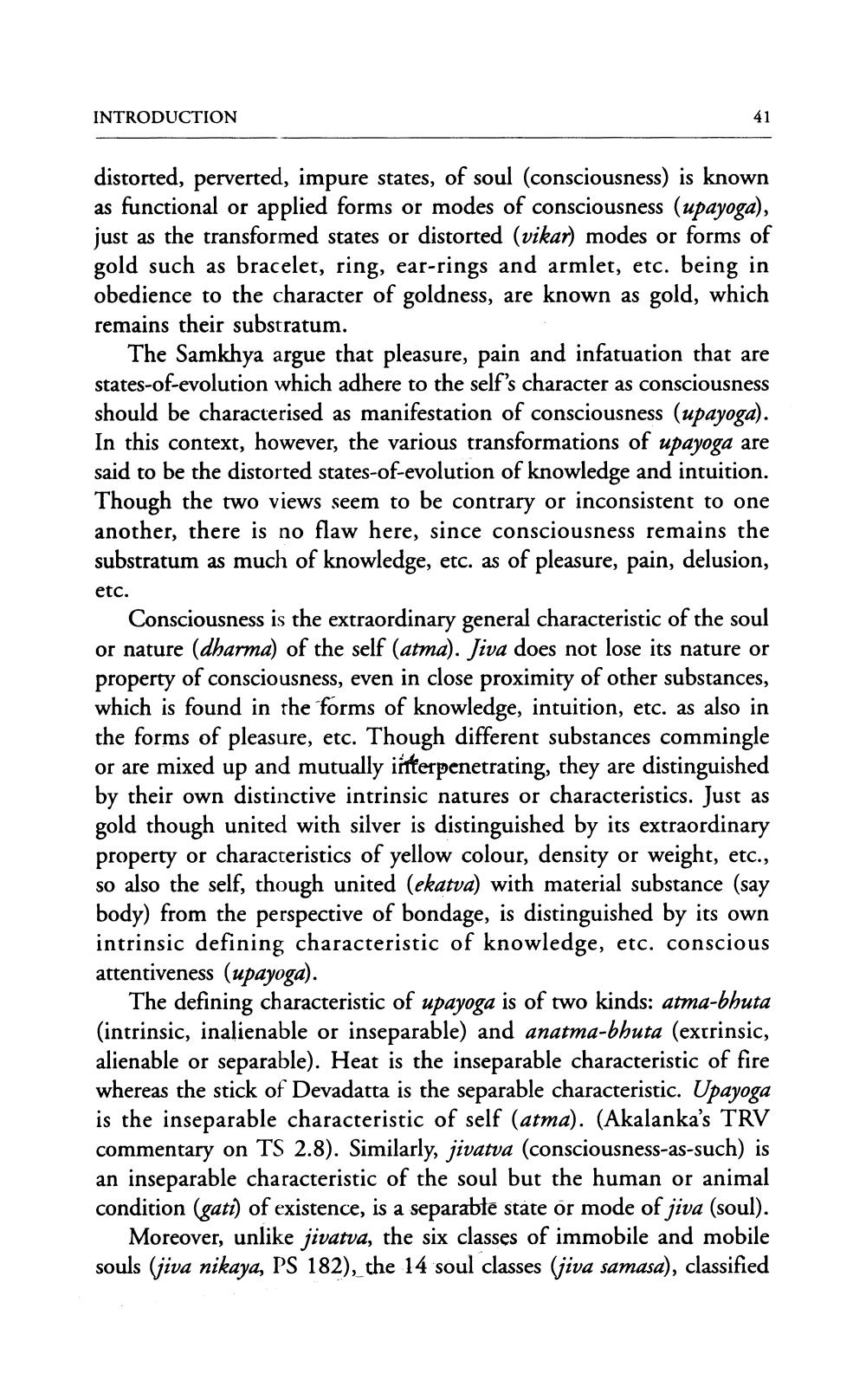________________
INTRODUCTION
distorted, perverted, impure states, of soul (consciousness) is known as functional or applied forms or modes of consciousness (upayoga), just as the transformed states or distorted (vikar) modes or forms of gold such as bracelet, ring, ear-rings and armlet, etc. being in obedience to the character of goldness, are known as gold, which remains their substratum.
The Samkhya argue that pleasure, pain and infatuation that are states-of-evolution which adhere to the self's character as consciousness should be characterised as manifestation of consciousness (upayoga). In this context, however, the various transformations of upayoga are said to be the distorted states-of-evolution of knowledge and intuition. Though the two views seem to be contrary or inconsistent to one another, there is no flaw here, since consciousness remains the substratum as much of knowledge, etc. as of pleasure, pain, delusion,
etc.
Consciousness is the extraordinary general characteristic of the soul or nature (dharma) of the self (atma). Jiva does not lose its nature or property of consciousness, even in close proximity of other substances, which is found in the forms of knowledge, intuition, etc. as also in the forms of pleasure, etc. Though different substances commingle or are mixed up and mutually iifterpenetrating, they are distinguished by their own distinctive intrinsic natures or characteristics. Just as gold though united with silver is distinguished by its extraordinary property or characteristics of yellow colour, density or weight, etc., so also the self, though united (ekatva) with material substance (say body) from the perspective of bondage, is distinguished by its own intrinsic defining characteristic of knowledge, etc. conscious attentiveness (upayoga).
The defining characteristic of upayoga is of two kinds: atma-bhuta (intrinsic, inalienable or inseparable) and anatma-bhuta (extrinsic, alienable or separable). Heat is the inseparable characteristic of fire whereas the stick of Devadatta is the separable characteristic. Upayoga is the inseparable characteristic of self (atma). (Akalanka's TRV commentary on TS 2.8). Similarly, jivatva (consciousness-as-such) is an inseparable characteristic of the soul but the human or animal condition (gati) of existence, is a separable state or mode of jiva (soul).
Moreover, unlike jivatva, the six classes of immobile and mobile souls (jiva nikaya, PS 182), the 14 soul classes (jiva samasa), classified




